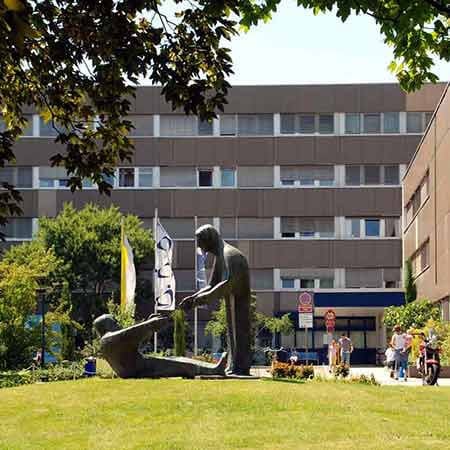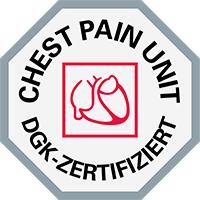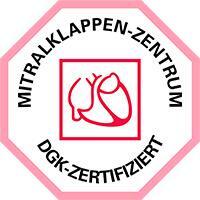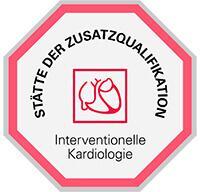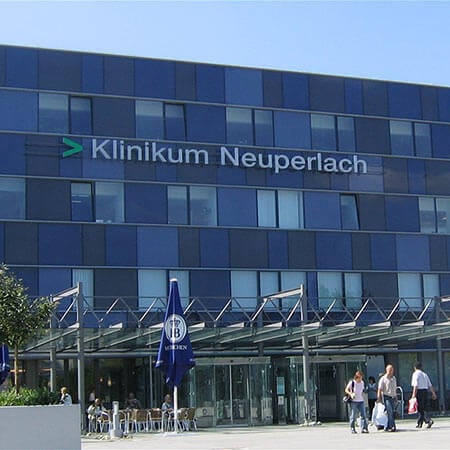Atrioventricular nodal reentrant tachycardia (AVNRT) is a medical term for a sudden heartbeat associated with a pathology of the heart's own conduction system. While in the normal state, electrical excitation spreads sequentially between the chambers of the heart, AV nodal tachycardia creates conditions for almost simultaneous excitation and contraction of all chambers of the heart. The change in the order of contraction of the heart chambers leads to serious disturbances in blood flow.
Content
- Overview
- How is AVNRT diagnosed?
- Clinical manifestation
- Treatment of AVNRT
- Medical care after radiofrequency ablation
- Prognosis
- Treatment in German hospitals
- The cost of treatment in Germany
- Treatment with Booking Health
Overview
This heart disease is one of the most common tachyarrhythmias that accounts for 85% of all ventricular arrhythmias in medicine. Among patients with this arrhythmia, men are diagnosed with the condition somewhat more often. With that said, this type of tachycardia is common in all age groups. However, in the majority of cases, pronounced clinical manifestations occur between the ages of 28 and 40.
The mechanism of arrhythmia is the reentry between fast and slow atrioventricular (AV) conduction pathways.
Patients with atrioventricular nodal reentrant tachycardia usually have no signs of structural myocardial pathology. The heart disease occurs as episodes of frequent rhythmic palpitations, which start and stop suddenly. The duration of atrioventricular nodal reentrant tachycardia paroxysms ranges from a few seconds to several hours, and their frequency ranges from daily arrhythmia attacks to 1-2 times a year. Symptomatology during an attack depends on heart rate (usually from 140 to 250 per minute), the functional capacity of the cardiovascular system, and the presence of concomitant pathology. During the paroxysm, patients usually complain of weakness, dizziness, the sensation of pulsation in the vessels of the neck and head. Sometimes the attack is accompanied by the development of syncope or hypotension.
How is AVNRT diagnosed?
To diagnose atrioventricular nodal reentrant tachycardia, doctors use various methods in their clinical practice, including medical history assessment, physical examination, and various instrumental methods of examination. Electrocardiography and electrophysiological examination (transesophageal or endocardial) are the most informative for verification of atrioventricular nodal reentrant tachycardia.
As a rule, the manifestation of clinical signs of arrhythmia in individuals with AVNRT occurs at an early age. The reasons for this are not definitively known. It is supposed that it is connected with the congenital reentrant loop with earlier activation, and in patients with formation of reentrant loop, including slow and fast conduction pathways and perinodal area of atrium, a number of functional and anatomical conditions are necessary.
There are quite specific criteria for the diagnosis by means of ECG. However, it should be taken into account that the diagnosis based on ECG data may not be confirmed during the further investigation of the patient. According to medical data, error may amount to 50%, and therefore the electrophysiological examination is considered the "gold standard" for definitive diagnostics of various forms of atrioventricular nodal reentrant tachycardia.
Clinical manifestation
Clinical manifestation of the atrioventricular nodal reentrant tachycardia varies depending on whether there is an arrhythmic attack.
Patients often do not demonstrate signs or manifestations of heart diseases outside the attacks. Somewhat more frequently, this arrhythmia can be associated with the so-called isolated connective tissue abnormalities of the heart (mitral valve prolapse, false left ventricular chord, etc.).
During an arrhythmic attack, the factor provoking arrhythmia in 18% of patients is whether physical or emotional overstrain and, less often, alcohol consumption. In most cases, there are no definite factors provoking arrhythmias. The main complaints of patients during an AVNRT attack are episodes of rhythmic palpitations and heart palpitations that start and end suddenly.
A pulsating sensation in the cervical veins is the most common because, during a typical paroxysm, a "fast" retrograde depolarization front causes atrial systole to coincide with or even slightly precede ventricular systole. As a result, atria contract in conditions of closed atrioventricular valves, which are accompanied by pulsation of cervical veins. Less frequently, seizures are accompanied by hypotension, development of presyncope and syncope, and other complaints. An arrhythmic attack may last from a few seconds to several hours and pass on its own or after reflex techniques. In 65% of cases, paroxysms are prolonged, and such type of attack requires medical intervention.
Treatment of AVNRT
The treatment tactics for AVNRT tachycardia are divided into emergency therapy and planned treatment.
The modern algorithm of AVNRT paroxysm emergency therapy implies stepwise use of various methods and antiarrhythmic drugs depending on the hemodynamic significance of the arrhythmia and the previously established efficacy of their use.
According to the medical guidelines, intravenous administration of adenosine is advisable for arresting AVNRT paroxysm. In cases accompanied by hemodynamically significant symptoms such as syncope, presyncope, hypotension, angina pectoris, or pronounced progression of heart failure, the first step of treatment is electric cardioversion. Reflex tests (Valsalva maneuver, carotid sinus massage), non-dihydropyridines, β-adrenoblockers, and cardiac glycosides are effective for relieving recurrent paroxysms of atrioventricular nodal reentrant tachycardia.
The technique of transesophageal electrocardiostimulation in modes of competitive, frequent, programmed or synchronized stimulation is also widely used for tachycardia relief. The efficiency of this technique reaches 90% depending on the simulation mode.
In planned AVNRT treatment, if the clinical examination does not reveal any signs of structural myocardial pathology, class IC drugs are the most effective agents for the management of the disease. It was found that during their use, atrioventricular nodal reentrant tachycardia does not recur in 40% of patients within a year, while the use of calcium channel blockers does not cause paroxysms within a year of observation in only 23% of cases. The use of non-dihydropyridines or β-adrenoblockers in patients with diagnosed organic cardiac pathology and paroxysmal AVNRT is considered reasonable, since these drugs also have antianginal properties.
In patients with rare paroxysms (1-2 times a year) without significant hemodynamic significance, it is possible to use antiarrhythmic drugs only during a tachycardia attack.
Radiofrequency ablation is another method of planned treatment. The essence of the technique is the destruction of the pathological focus that generates electrical impulses, or the areas of the conduction system supporting the pathological electrical dynamic. The procedure is performed using catheters, which are guided through the vessels under radiological control to the area of the heart where the pathological area that has become the source of the rhythm disturbance is located.
Various physical energy sources can be used for destruction. To date, the most effective and safe impacts are the use of high frequency electric current. That is why catheter destruction is also popularly called "radiofrequency ablation".
This surgery is classified as a minimally invasive intervention because it is performed without cutting into the skin. A doctor performs punctures of the femoral vessels, through which then guides the catheters into the heart cavity. A person does not feel the catheters moving in the vessels and heart cavity. Therefore, in adults, this procedure usually takes place under local anesthesia.
Medical care after radiofrequency ablation
Radiofrequency catheter ablation is a minimally invasive method of surgical treatment of heart rhythm disorders with high effectiveness. Positive results are achieved in 50-60% with RFA for atrial fibrillation, 75-80% with RFA for atypical atrial flutter, and 90-98% with RFA for paroxysmal supraventricular tachycardia. However, to get the maximum effect, patients themselves have to follow the recommendations of a health practitioner with responsibility.
Drug therapy may be indicated for several months after the procedure.
During the period after the intervention, the sensation of heart palpitations, discomfort, and possible rhythm disturbances may persist. In 10-15% of patients, after three months, paroxysms persist, and a second consultation with a cardiologist may be required to decide whether a repeat procedure is necessary.
In the case of frequent paroxysms of atrioventricular nodal reentrant tachycardia, patients should call an ambulance.
Prognosis
In the absence of structural heart pathology, the prognosis for patients with atrioventricular nodal reentrant tachycardia is favorable. In most cases, drug therapy is also effective for the prevention of recurrences. The efficacy of radiofrequency ablation of atrioventricular nodal reentrant tachycardia is about 95% with a low level of complications. This method is preferred in the majority of patients.
Treatment in German hospitals
Cardiology is a broad branch of medicine concerned with the study of the human cardiovascular system and the development of effective methods for its treatment and prevention. In addition, the scope of cardiology includes the problems of medical rehabilitation of people with lesions of the cardiovascular system.
All surgical and therapeutic manipulations performed by German doctors comply with the international protocols. All methods are aimed at organ preservation and minimally invasive approach. It is worth mentioning that Germany was the country where the first laparoscopic and endoscopic surgical interventions were performed.
The treatment of heart disease in German hospitals is widely known not only in Europe, but also overseas. University German hospitals are large-scale multidisciplinary treatment institutions. They comprise a great number of clinics, research institutes, treatment and diagnostic centers, and advanced laboratories.
That is why so many foreign patients with atrioventricular nodal reentrant tachycardia entrust their treatment to specialists of leading German hospitals.
You can find more hospitals for AVNRT tachycardia treatment in Germany on the Booking Health website.
The cost of treatment in Germany
For patients wishing to undergo treatment in Germany, the cost of treatment in Germany is one of the first questions. Prices for treatment in Germany are calculated according to the unified national rates. When calculating the cost of treatment in Germany, the cost of the medical service, the cost of medicines and necessary materials are taken into account at once.
The prices for diagnostics for atrioventricular nodal reentrant tachycardia start at 479 EUR; the price for rehabilitation after treatment starts at 566 EUR.
If you would like to know what would be the cost of treatment in German hospitals with RFA in your clinical case, leave a request on the Booking Health website.
Treatment with Booking Health
Over the years, thousands of patients have used the services of Booking Health for diagnostic, therapeutic, and preventive care.
Booking Health helps select a hospital and a doctor, forms an offer for treatment/diagnostics with exact amount and number of days of stay and provides different price categories, assists with arrangement of medical visas for treatment in Germany, and negotiates with the chosen hospital.
Hit the request button on the Booking Health website and fill in the form for Booking Health to contact you.
Authors:
This article was edited by medical experts, board-certified doctors Dr. Nadezhda Ivanisova, and Dr. Bohdan Mykhalniuk. For the treatment of the conditions referred to in the article, you must consult a doctor; the information in the article is not intended for self-medication!
Our editorial policy, which details our commitment to accuracy and transparency, is available here. Click this link to review our policies.
